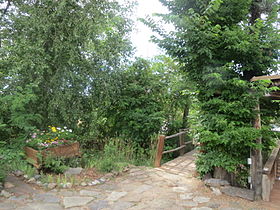
Taos is a town in Taos County in the north-central region of New Mexico in the Sangre de Cristo Mountains. Initially founded in 1615, it was intermittently occupied until its formal establishment in 1795 by Nuevo México Governor Fernando Chacón to act as fortified plaza and trading outpost for the neighboring Native American Taos Pueblo and Hispano communities, including Ranchos de Taos, Cañon, Taos Canyon, Ranchitos, El Prado, and Arroyo Seco. The town was incorporated in 1934. As of the 2010 census, its population was 5,716.

The Taos art colony was an art colony founded in Taos, New Mexico, by artists attracted by the culture of the Taos Pueblo and northern New Mexico. The history of Hispanic craftsmanship in furniture, tin work, and other mediums also played a role in creating a multicultural tradition of art in the area.
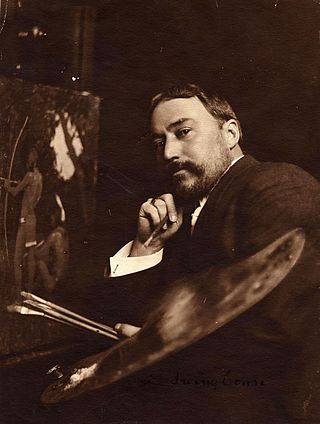
Eanger Irving Couse was an American artist and a founding member and first president of the Taos Society of Artists. Born and reared in Saginaw, Michigan, he went to New York City and Paris to study art. While spending summers in Taos, New Mexico, he began to make the paintings of Native Americans, New Mexico, and the American Southwest for which he is best known. He later settled full time in Taos.

Art colonies are organic congregations of artists in towns, villages and rural areas, who are often drawn to areas of natural beauty, the prior existence of other artists, art schools there, or a lower cost of living. They are typically mission-driven planned communities, which administer a formal process for awarding artist residencies. A typical mission might include providing artists with the time, space, and support to create, fostering community among artists, and providing arts education, including lectures and workshops.
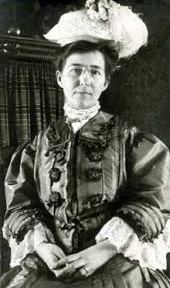
Dulah Marie Evans, later Dulah Marie Evans Krehbiel was an American painter, photographer, printmaker, illustrator, and etcher.

Mary Hunter Austin was an American writer. One of the early nature writers of the American Southwest, her classic The Land of Little Rain (1903) describes the fauna, flora, and people of the region between the High Sierra and the Mojave Desert of southern California.

The Institute of American Indian Arts (IAIA) is a public tribal land-grant college in Santa Fe, New Mexico, United States. The college focuses on Native American art. It operates the Museum of Contemporary Native Arts (MoCNA), which is housed in the historic Santa Fe Federal Building, a landmark Pueblo Revival building listed on the National Register of Historic Places as Federal Building. The museum houses the National Collection of Contemporary Indian Art, with more than 7,000 items.

Mabel Evans Dodge Sterne Luhan was an American patron of the arts, who was particularly associated with the Taos art colony.
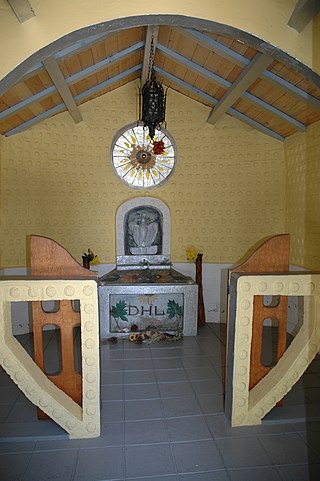
The D. H. Lawrence Ranch, as it is now known, was the New Mexico residence of the English novelist D. H. Lawrence for about two years during the 1920s and the only property Lawrence and his wife Frieda owned. The 160-acre (65 ha) property, originally named the Kiowa Ranch, is located about eighteen miles (29 km) northwest of Taos, New Mexico, near Lobo Mountain and San Cristobal in Taos County, at about 8,600 feet (2,600 m) above sea level. The gate of the ranch is 4.2 miles (6.8 km) by road from a historic marker and turnoff on state route NM 522.
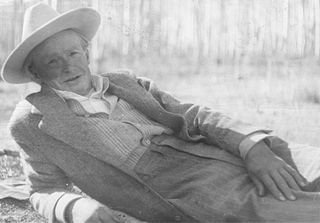
Andrew Michael Dasburg was an American modernist painter and "one of America's leading early exponents of cubism".

The Ernest L. Blumenschein House is a historic house museum and art gallery at 222 Ledoux Street in Taos, New Mexico. It was a home of painter Ernest L. Blumenschein (1874-1960), a co-founder of the Taos Society of Artists and one of the "Taos Six". It was declared a National Historic Landmark in 1965.
Dodge House may refer to:
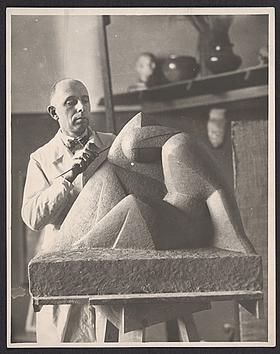
Arnold Rönnebeck was a German-born American modernist artist and museum administrator. He was a vital member of both the European and American avant-garde movements of the early twentieth century before settling in Denver, Colorado. Rönnebeck was a sculptor and painter, but is best known for his lithographs that featured a range of subjects including New York cityscapes, New Mexico and Colorado landscapes and Native American dances.
Thomas Paul "Doc" Martin was an American physician. He was one of the first American residents of Taos County, New Mexico and the first practicing physician in Taos.

The Harwood Museum of Art is located in Taos, New Mexico. Founded in 1923 by the Harwood Foundation, it is the second oldest art museum in New Mexico. Its collections include a wide range of Hispanic works and visual arts from the Taos Society of Artists, Taos Moderns, and contemporary artists. In 1935 the museum was purchased by the University of New Mexico. Since then the property has been expanded to include an auditorium, library and additional exhibition space.

Taos Downtown Historic District is a historic district in Taos, New Mexico. Taos "played a major role in the development of New Mexico, under Spanish, Mexican, and American governments." It is a key historical feature of the Enchanted Circle Scenic Byway of northern New Mexico.

La Morada de Nuestra Senora de Guadalupe, also known as Taos Morada, is a holy site and past home of La Fraternidad Piadosa de Nuestro Padre Jesús Nazareno in Taos, New Mexico. The Penitent Brothers, or the Hermanos Penitentes used the Morado for religious study of ancient Catholic lay religious practices.
Rebecca Salsbury James (1891–1968) was a self-taught American painter, born in London, England of American parents who were traveling with the Buffalo Bill Wild West Show. She settled in New York City, where she married photographer Paul Strand. Following her divorce from Strand, James moved to Taos, New Mexico where she fell in with a group that included Mabel Dodge Luhan, Dorothy Brett, and Frieda Lawrence. In 1937 she married William James, a businessman from Denver, Colorado who was then operating the Kit Carson Trading Company in Taos. She remained in Taos until her death in 1968.

Joe Trinidad Archuleta was a Pueblo-American painter and muralist from the Taos Pueblo. Some of his works are in the permanent collection of institutions including the Museum of New Mexico.





